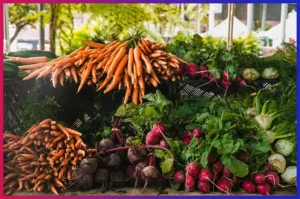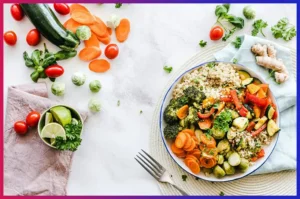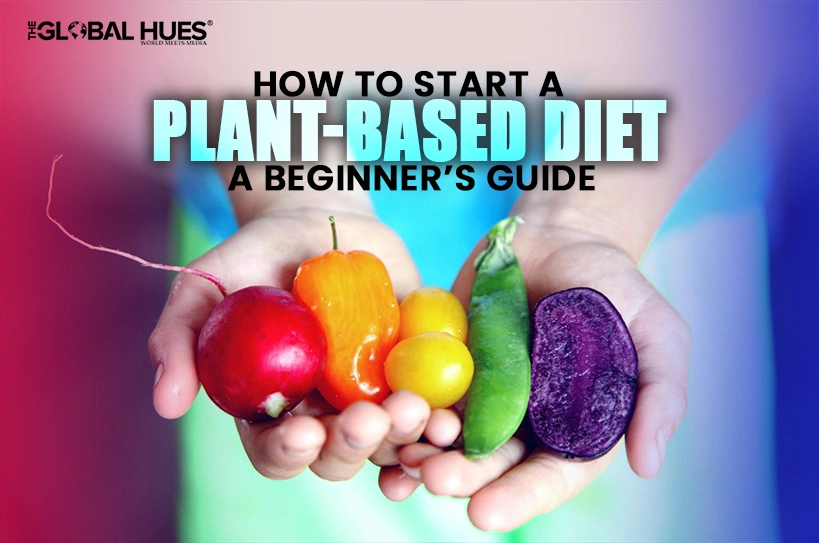There are different reasons for wanting to start a plant-based diet. Whether you’re aiming for a healthier lifestyle or whether it’s for ethical and environmental reasons, it’s difficult to know where to start. Whatever your motivation, it may be easier to change your eating habits than you think.
What is a Plant-Based Diet?
A plant-based diet isn’t just about swapping meat for more veggies. It’s a way of eating that focuses on foods originating from plant sources. This doesn’t necessarily mean your diet is completely animal-free, but may still include animal products in reduced quantities. For those considering completing a DNP-FNP online or other career in healthcare, an understanding of various diets can be helpful in advising patients on making healthier choices.
‘Plant-based’ can mean different things to different people. Here are the main types of plant-based eating regimes to help you choose which one is best for you:
1. Flexitarian – As the name suggests, this diet is flexible. Although you eat mainly plant-based foods, you can still eat meat or fish occasionally.
2. Pescatarian – On this diet, you cut out meat altogether but still eat fish.
3. Vegetarian – You cut out meat and fish but can still eat dairy products and eggs.
4. Vegan – This diet consists solely of plant-based products and excludes meat, fish, dairy products, eggs, and sometimes honey.
5. WFPB (Whole Foods Plant Based) – Similar to the vegan diet, this approach focuses on eating whole, unprocessed plant foods. The reasons for following a WFPB diet are often more health-related rather than ethical or environmental, as is common with the vegan diet.
What are the Benefits of a Plant-Based Diet?
There are many health benefits to a plant-based diet. Choosing to eat more fruits, vegetables, and whole foods means you are consuming essential vitamins, minerals, antioxidants, and fiber. And, while weight loss may not be your primary goal, replacing a meat-based diet with a plant-based one can reduce the risk of obesity. Here are some of the other health benefits:
A Healthy Heart
Studies have shown that a plant-based diet may reduce the risk of developing cardiovascular disease. Since meat contains saturated fat, cutting it out can lower the risk of high blood pressure and cholesterol levels, as well as improve blood sugar levels.
Preventing Type 2 Diabetes
Research shows that a well-balanced plant-based diet can reduce the risk of developing type 2 diabetes. This type of diet includes more fiber, which improves insulin sensitivity. While reducing your animal fat intake helps keep weight under control, as fatty tissue makes cells more resistant to insulin.
Decreased Risk of Cancer
Research has consistently shown that a plant-based diet is associated with a lower cancer risk. This is because fruits and vegetables are rich in phytochemicals, which are known for their disease-fighting properties. Also, eating red and processed meats has been linked to an increased risk of cancer.
Keeping Your Brain Strong
Fruits and vegetables are full of polyphenols, and according to a recent review, polyphenols may help lower the risk of developing Alzheimer’s disease, dementia, and cognitive decline.

What Foods Can You Eat on a Plant-Based Diet?
The foods you can eat on a plant-based diet depend on the specific type of diet you choose. Generally, as you replace meat and dairy products with plant-based substitutes, you’ll focus on eating more fruits, vegetables, whole grains, pulses, nuts, seeds, and other protein alternatives.
Here are some suggestions for foods to include in a plant-based diet:
- Fruits and Vegetables – A variety of colorful fruits and vegetables should be a staple in your diet.
- Whole Grains – Foods like quinoa, brown rice, oats, and whole-wheat products provide essential nutrients and fiber.
- Pulses – Beans, lentils, and chickpeas are excellent sources of protein and fiber.
- Nuts and Seeds – Almonds, chia seeds, flaxseeds, and walnuts add healthy fats and protein.
- Protein Substitutes – There are many soy-based meat substitutes available now, such as seitan, tofu, and tempeh, as well as dairy substitutes like almond and coconut milk, and plant-based cheeses.
To ensure you’re eating a balanced diet, try and incorporate a wide variety of foods to make sure you’re consuming all the right nutrients. If you choose to supplement your plant-based diet with animal products, opt for quality produce from grocery stores or local farms.
The goal of a plant-based diet is to adopt a healthier way of eating by focusing on whole, unprocessed foods. Try to avoid processed meats, refined grains, such as white bread and pasta, candy and artificial sweeteners, and fast food.
How to Start a Plant-Based Diet?
Easing into a plant-based diet one step at a time is better than diving in all at once. This gradual approach allows your body to adjust, making it easier for you to stick with the changes.
Start by having one meatless day per week or eating only plant-based foods until dinner time. Gradually replace meat dishes with meat substitutes. Swap refined white bread and pasta for wholegrain options. Choose vegetables with high nutritional value and essential vitamins, such as spinach, kale, and avocado.
Cut down on processed foods and replace them with healthier snack options like fruits, nuts, and seeds. Planning your meals in advance and shopping with a complete list can help keep you on track. There are hundreds of websites featuring recipes for all types of plant-based diets, making meal planning much easier and more enjoyable.

What Challenges Will I Face When Starting a Plant-Based Diet?
Starting a plant-based diet can be challenging because it’s a big change in your lifestyle. You may face unwanted cravings or feel tempted while watching others eat old favorites. It’s also essential to ensure you’re getting enough protein, which you would typically get from meat, to maintain a healthy, balanced diet.
With some research and forward planning, this new way of eating will soon become second nature, and you can put those cravings behind you.
*The information in this article does not necessarily reflect the views of The Global Hues. We make no representation or warranty of any kind, express or implied, regarding the accuracy, adequacy, validity, reliability, availability or completeness of any information in this article.*



